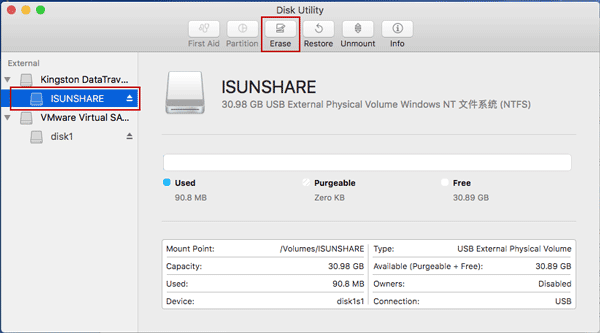
How To Format Usb On Mac For Windows
The best ways to format an external drive for Windows and Mac Compare the different options for formatting an external hard drive to work with Windows and Mac. And, no: the answer isn't always FAT32. Jan 12, 2016 - Have you ever ran into a problem where you're trying to use a flash drive on both Windows and Mac? Here's how to correctly format the drive to. Aiseesoft video converter ultimate.
Nowadays, when you buy a USB drive, you can use it right out of the box with your Mac. However, unless it’s been designed for use with a Mac, it won’t be formatted using macOS’ preferred file system (either Mac OS Extended or APFS, depending on which version of macOS you’re running).
That’s because most of the computers in the world run Windows, and Windows uses a different file system, usually one known as Fat32. Drives formatted as Fat32 can be read from and written to by macOS, but it’s not optimal and you’re more likely to run into problems than if you use macOS’ native format. So, if you’ve bought a USB drive that’s formatted as Fat32, or any other format other than Mac OS Extended (also known as HFS+) or APFS, here’s how to format a USB drive on Mac. It’s exactly the same procedure if you need to reformat a flash drive on a Mac. How to format a USB drive on a Mac 1. Plug the drive into a USB socket (if you have a recent MacBook or MacBook Pro that only has USB-C connectors, you’ll need a USB-C to USB-A adaptor). Open a new Finder window and click on the drive.
Make sure it has no files on it that you need. The process of reformatting it will wipe all the data from it. Once you’ve copied any files you need from the USB drive to your Mac, go to Applications>Utilities and double-click on Disk Utility. Click on the USB drive in the sidebar and then choose Erase from the toolbar at the top of the window.
In the window that drops down type a name for the formatted drive in the box next to Name. Choose a format from the dropdown menu. If you have previously stored sensitive data on the drive, click the Security tab.

Choose a security level using the slider. The further to the right you move the slider, the more ‘passes’ the erase tool will make and the more securely files will be deleted. However, it also increases the time it takes to format the drive quite considerably. Click Ok then click Erase. Tip: You don’t need to erase a whole drive to delete files securely. If you have confidential files or sensitive data you need to remove from your Mac completely, you should use File Shredder. It’s specifically designed to securely delete sensitive data and will render it unrecoverable.
You can download CleanMyMac X for free. Which format to choose? If your Mac is running macOS High Sierra or later, you have two options for file formats: APFS and Mac OS Extended. Which should you choose?
The key point is that disks formatted as APFS won’t be recognized by Macs running versions of macOS older than High Sierra. So if you think you might need to plug the USB drive into a Mac running an older version of macOS, format it as Mac OS Extended. APFS is optimized for SSD (solid state drive) such as flash drives, so if you reformat a flash drive on a Mac, you should definitely choose APFS (unless you plan to use it with a pre-High Sierra Mac, of course). Even on hard drives, however, APFS is faster and more reliable than Mac OS Extended. Finally, if you plan to use the USB drive as a destination for Time Machine backups, choose Mac OS Extended. Time Machine can’t currently back up to an APFS disk and if you select one for use with Time Machine, it will offer to reformat it as Mac OS Extended. Live home 3d for mac torrent.
You can, however, backup an APFS formatted disk to a Mac OS Extended Time Machine drive. How to format a USB drive to FAT32 on a Mac The main reason for formatting a USB drive as Fat32 on a Mac is that you want to be able to use the drive on a Windows PC, as well as a Mac — perhaps to transfer files between the two machines. You may also be preparing the drive for use as, say, a storage device for a media player or to record TV programmes on a TV with a USB port.
The fact that Fat32 can be read from and written to on both Mac and Windows makes it very versatile. However, there is a significant limitation — individual files have a maximum size of 4GB.
So, if you’re using the USB drive to store large video files, you may run into trouble. There is a solution, however, exFAT. Unlike FAT32, exFAT doesn’t have a maximum file limit. Better still, it can be read from and written to on any Mac running Mac OS X Snow Leopard or later and on Windows. To format a USB drive in FAT32 or exFAT: 1. Plug the USB drive into your Mac. Go to Applications>Utilities and launch Disk Utility.